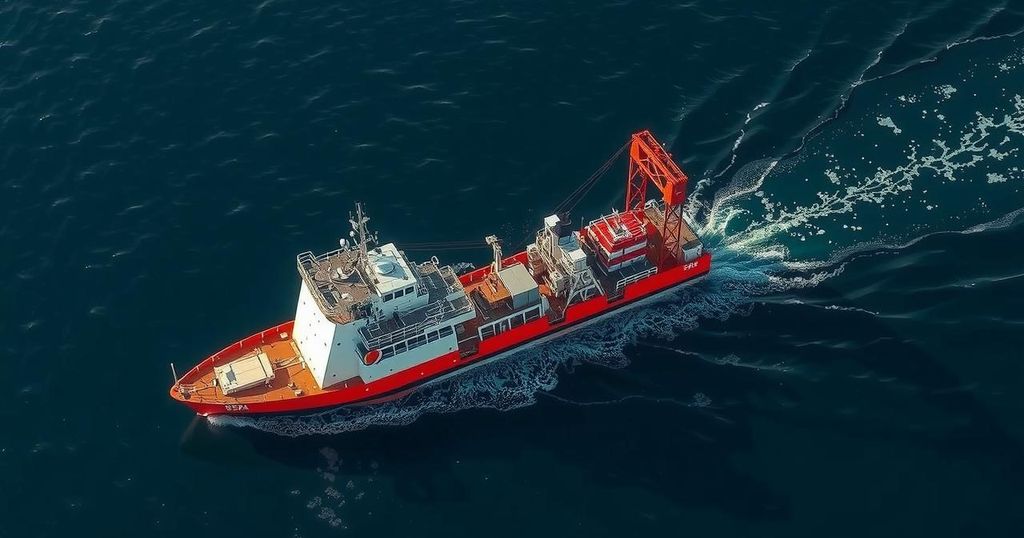Durham Scientist Investigates the 2011 Tohoku Earthquake Through Seabed Drilling

A Durham scientist is part of an international team drilling into Japan’s seabed to study the 2011 Tohoku earthquake, which caused significant destruction and loss of life. The Tracking Tsunamigenic Slip Across the Japan Trench (JTRACK) project aims to analyze fault samples to understand the earthquake’s unusual characteristics, challenging previous assumptions regarding subduction zones. The team’s insights may enhance knowledge of seismic phenomena and improve future disaster preparedness.
A Durham-based scientist is actively participating in an international research initiative focused on drilling into the seabed off Japan’s eastern coastline, in order to gain insights into the seismic events surrounding the 2011 Tohoku Great Earthquake. This earthquake was one of the most significant seismic occurrences in recent history, leading to widespread devastation including a tsunami that reached six miles inland and a catastrophic meltdown at the Fukushima Daiichi nuclear power plant, ultimately causing around 18,500 fatalities and displacing over 160,000 individuals.
The Japan Trench Fast Drilling Project (JFAST), conducted in 2013, initially collected samples from the Japan Trench tectonic plate to examine the causes of the earthquake. Currently, the research team, which includes Durham Earth Sciences scholar Rebecca Robertson, is aboard the Chikyu drilling vessel as part of the Tracking Tsunamigenic Slip Across the Japan Trench (JTRACK) project. They are specifically investigating the boundary plate fault that was responsible for the seismic event in 2011.
During this expedition, which spans four months, the team has made significant progress, having drilled through the overriding continental plate and accessed the subducting oceanic Pacific plate. They are now engaged in sampling deep-sea sediments and materials from the fault zone while also gathering high-resolution images to complement their analysis of the geological features within the fault.
Prior to the Tohoku earthquake, the scientific community operated under the assumption that the shallow portions of subduction zone faults did not exhibit rupture as seen in deeper layers. However, the 2011 event demonstrated exceptional displacement, breaking through to the seafloor. The JTRACK team aims to elucidate the underlying processes responsible for this unique earthquake phenomenon by analyzing fault samples and conducting further studies.
The 2011 Tohoku earthquake, one of the largest earthquakes recorded, triggered a catastrophic tsunami and resulted in severe infrastructure damage across Japan. A notable consequence of the earthquake was the meltdown of the Fukushima Daiichi nuclear power plant, emphasizing the importance of understanding the mechanisms behind such significant seismic activity. Prior research assumed that shallow fault zones were less likely to rupture, but the events of 2011 challenged these assumptions and necessitated further scientific inquiry into the processes at play in subduction zones, particularly in relation to the Japan Trench.
The ongoing research initiative, which includes a select group of scientists from various countries, is poised to deepen the understanding of the dynamics of subduction zones and the processes that can lead to extraordinary seismic events. By gathering critical data from the site of the 2011 Tohoku earthquake, the JTRACK project seeks to advance knowledge that will bolster earthquake preparedness and impact mitigation strategies in Japan and beyond.
Original Source: www.durham.ac.uk






